Healing With Calcium Montmorillonite Clay
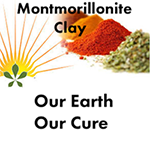 Because of its inherent healing properties,
Montmorillonite clay has long been
recognized as a subject worthy of study. Calcium Montmorillonite Clay is currently
being utilized in hospitals outside of the United States where it
has already proven its effectiveness.
Because of its inherent healing properties,
Montmorillonite clay has long been
recognized as a subject worthy of study. Calcium Montmorillonite Clay is currently
being utilized in hospitals outside of the United States where it
has already proven its effectiveness.
In recent years clay has become
a topic of discussion in numerous publications. Recently more information
has become available outlining the important role that Calcium Montmorillonite
Clay can play in the recovery and maintenance of health. It has
also been receiving significant recognition by the health care community,
as a proven and much overlooked natural alternative remedy in the
prevention and cure of disease.
Recent exposure has spurred the interest of people around the
world, prompting them to seek out reliable high quality resources
for clay. This well deserved notoriety is serving to educate the
public about this natural healing agent, as a true “Miracle of Life.
Not all Calcium Montmorillonite is the Same
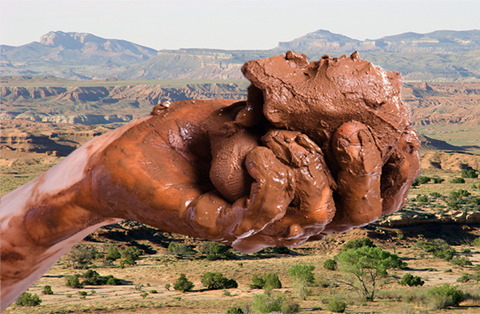
In order to absorb the trace elements, these elements must be of a small size. Neva Jensen states that
Terramin Clay
(a natural, premium Calcium Montmorillonite of extreme fine-particle size) has the advantage
of increased exchange properties since the calcium montmorillonite
deposit has undergone extensive hydrothermal exposure.
These favorable properties were created naturally from igneous activity deep in
the fissures of the earth, bringing boiling water to the surface
of the earth, and creating extensive pools of bubbling mud. These
bubbling pools churn the calcium montmorillonite, adding beneficial
trace minerals and breaking down the larger size parent material.
Over a long period of time this activity brings about complete fragmentation
or crystallization and hydrolysis of the clay making it readily
available for absorption.
Montmorillonite was first described in 1847 in Montmorillon, France more than 50 years
before the discovery of Bentonite in the US
and is named after that city. In years past sailing vessels departing from France were known to store clay on
board for the treatment of dysentery as well as other ailments.
Animals, domestic and wild alike,eat clay and roll into clay mud for healing
and to obtain relief from injuries.
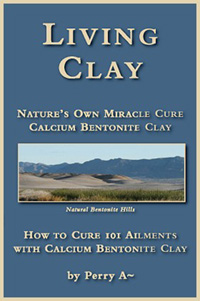 Montmorillonite clay deposits originated from volcanic ash,
minerals and eons of weathering. The clay was formed layer after
layer over a long period of time. Properties of Montmorillonite
can vary considerably such as color, mineral content, pH, and
ionic charge. Montmorillonite clay can be white, pale pink, blue,
yellow, red, or green in color with shades in between.
Bentonite is another name for Montmorillonite although it is calcium bentonite having
different properties than sodium bentonite.
Montmorillonite clay deposits originated from volcanic ash,
minerals and eons of weathering. The clay was formed layer after
layer over a long period of time. Properties of Montmorillonite
can vary considerably such as color, mineral content, pH, and
ionic charge. Montmorillonite clay can be white, pale pink, blue,
yellow, red, or green in color with shades in between.
Bentonite is another name for Montmorillonite although it is calcium bentonite having
different properties than sodium bentonite.
A recognized detoxifying agent, nutrient and bactericidal Calcium
Montmorillonite Clay is in the smectite group of clays. Only those
clays within the smectite group have the ability to absorb. Its
power as a detoxifying substance comes from its inherent ability
to adsorb and absorb. Its unique ability to grow and change (adsorb)
is the reason for its classification and recognition as a 'Living Clay'. While
there is more than one Montmorillonite, the red Calcium
Montmorillonite Clay of the smectite group remains a favorite for human use.
Clay which has been hydro-thermally altered and seasoned in the arid
desert is rich in content. The color of clay is determined by the
mixture and ratio of elements contained within it. Hydro-thermal
exposures over long periods of time affect the clay in two important
aspects; it becomes negatively charged and crystallized. As a result
of the crystallization process the clay is reduced into small particles
that make it easy for the body to assimilate. The negative charges
on the clay give it the ability to adsorb or attract positively
charged toxic matter, which is then absorbed into the clay and dispelled
from the body as waste.
In addition to the role it plays as a potent detoxifier, “Calcium
Montmorillonite Clay has also been used extensively in the
treatment of pain, open wounds, colitis, diarrhea, hemorrhoids, stomach ulcers,
intestinal problems, acne, anemia, and a variety of other health
issues.

As mentioned above “Living Clay is known to have been used historically
as an effective antibacterial in the treatment of dysentery, and
as a means of decontaminating water. Presently it is being used
internationally to clarify and balance small and large bodies of
water. This is so because “Living Clay particles are smaller than
many bacteria; when bacteria encounters an environment abundant
in clay it becomes surrounded by the clay, and embedded in it. The
immediate result is that the bacteria are unable to receive nourishment
and cannot survive.
The dominant approach in health care today is from the viewpoint that
considers the notion of parts. The diagnosis of illness is often
arrived at by looking for a specific disease by relying on symptoms
surfacing in an apparently localized part or parts of the body.
Once identified a specific medication for a specific problem is
applied. Only recently has medical science begun once again, to
explore the idea that health problems surface as a result of disease
in the whole system, not just one or more of the parts. The immune
system intimately affects each organ on a fundamental level, which
spans the boundaries of all the body’s vital functions.
This is critical to understanding the cause of chronic and degenerative
disease. The body’s vital systems are dependent on each other. The
presence of disease in any system impacts all systems. A lifestyle
without substantial nutrition, sufficient rest, a proper balance
of stress, and numerous other factors can weaken the immune system.
Malfunction of the immune system leads to infectious disease. It
is unrealistic to treat parts, and expect a whole result.
NASA-Tested, Mother-Earth Approved, Terramin
Not all products on the market can say that NASA has tested them!
However IonMin Clay by California Earth Minerals can!
The study done by NASA was extensive and involved several experiments to see how bones were
affected by the addition of different
calcium intakes to the diets of several test subjects. The tests included ION-MIN from
California Earth Minerals® mine near Brawley, California.
The study showed conclusively the superior benefits that ION-MIN provided for strengthening the bones of the test subjects.
The most effective calcium source that was tested is from the exact same area on the property where
California Earth Mineral clay products are being mined today.
The Terramin you take today is the same as the clay the astronauts took.
 Terramin is 100% safe and effective clay that has surpassed all U.S. standards for product
purity and consistency. Terramin is an
edible Calcium Montmorillonite clay that
contains a combination of more than 60 macro, micro and essential trace mineral elements that are in a 100% natural form.
This clay acts as a catalyst to enhance healing, growth, digestion and detoxification in all living things.
Terramin is 100% safe and effective clay that has surpassed all U.S. standards for product
purity and consistency. Terramin is an
edible Calcium Montmorillonite clay that
contains a combination of more than 60 macro, micro and essential trace mineral elements that are in a 100% natural form.
This clay acts as a catalyst to enhance healing, growth, digestion and detoxification in all living things.

NASA sponsored research - Dr. Benjamin H. Ershoff
December, 1964: Dr. Benjamin H. Ershoff, begins NASA-sponsored research
prompted by evidence that astronauts' bodies lose large amounts of calcium from the bones under conditions of weightlessness.
According to doctors, such conditions weaken the body and increase chances that kidney
stones may develop during flights lasting months
or years. Ershoff found that supplementing the diet with calcium alone couldn't reverse the severe damage of severely accelerated
osteoporosis--but clay did, for animals. Especially the calcium montmorillonite clay produced
impressive results in promoting growth and
preventing disorders in the bones such as osteoporosis
of tested animals, Ershoff said.
When a small percentage of the Nutramin Clay was added to the
diet, Ershoff said, the animals' body weight increased and bone diseases were prevented. Little other
benefits were noted, he said, when calcium alone was added. "This
means that the clay supplement contained some factor or factors
other than calcium which promoted improved calcium utilization and
bone formation," he explained. Ershoff added that the consumption
of clay has been observed among many peoples and animals for centuries,
especially in areas where there is a marked deficiency of calcium,
iron and other minerals in the diet.
 The American Journal of Clinical Nutrition published an article
on clay eating and detoxification (Timothy and Duquette 1991). Among
the many examples listed by the authors, the following are some
of the more striking evidence for body purification through the
use of clay. When the Pomo Indians of California consumed clay
with traditional bitter and toxic types of acorns, the clay absorbed
the poisons and eliminated the bitterness.
The American Journal of Clinical Nutrition published an article
on clay eating and detoxification (Timothy and Duquette 1991). Among
the many examples listed by the authors, the following are some
of the more striking evidence for body purification through the
use of clay. When the Pomo Indians of California consumed clay
with traditional bitter and toxic types of acorns, the clay absorbed
the poisons and eliminated the bitterness.
The Indians were able to survive on a staple food that, without clay, would
have posed a serious potential threat to their health. In an experiment performed
under laboratory conditions, rats voluntarily ate clay in response
to gastrointestinal problems induced by poisoning. Further examples
cited chimpanzees who ate clay after ingesting plant foods loaded
with toxins. The article concluded that
clays could adsorb dietary toxins, bacterial toxins associated with gastrointestinal disturbance,
hydrogen ions in acidosis, or metabolic toxins such as steroidal
metabolites associated with pregnancy. All these conditions result
in a host of common symptoms, including nausea, vomiting, and diarrhea
– in short, symptoms of toxic overload.
40 million Americans don’t even have to go to the doctor to get
their medications, it comes for free in the tap water which is polluted
with all kinds of nasty pharmaceutical drugs. Armed with the proper
information, there’s no reason to fear the latest news about
toxins and pharmaceutical drugs being found in your water. Not
to say that this news isn’t alarming. Measures must be taken to
remove these harmful substances from our ecosystem. But until the
day that dream becomes a reality, you can protect yourself and your
loved ones with calcium bentonite clay. Taken internally,
therapeutic clay safely removes toxins from your system.
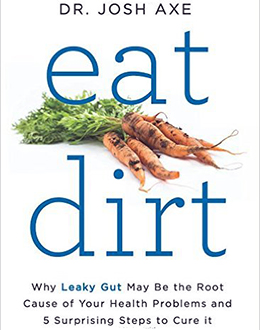 According to an article published in the American Journal of Clinical Nutrition,
"Detoxification and Mineral Supplementation As Functions of Geophagy"
(Johns and Duguette 1991), the most prevalent explanation of clay
eating is that it is a response to nutritional
deficiency. In several clinical studies, eating clay has been
implicated as a response to particular deficiencies. In a handful
of experiments run by scientists, mineral deficiencies, such as
those for iron or potassium, were introduced to animals. As a result
of those experiments, those animals changed in their dietary behavior.
According to an article published in the American Journal of Clinical Nutrition,
"Detoxification and Mineral Supplementation As Functions of Geophagy"
(Johns and Duguette 1991), the most prevalent explanation of clay
eating is that it is a response to nutritional
deficiency. In several clinical studies, eating clay has been
implicated as a response to particular deficiencies. In a handful
of experiments run by scientists, mineral deficiencies, such as
those for iron or potassium, were introduced to animals. As a result
of those experiments, those animals changed in their dietary behavior.
For instance, iron deficiency has been established as a reason for
the ingestion of certain clays, although there is still debate on
this issue. In the Runjut Valley, in the Sikkim Himalayas, the natives
chew a red clay as a cure for goiter because of its particular mineral
content. It is not uncommon for mineral supplements in health food
stores to contain portions of various types of clay. Certain clays,
though not all clays, contribute major amounts of important minerals,
such as calcium, iron, magnesium, manganese, and zinc.
While Calcium Montmorillonite Clay is a powerful nutrient and
detoxifier it is important to recognize that it is a part of a total
health care system. Healing benefits may result from internal and/or
external clay applications. The clay may be ingested, applied as
a poultice, and/or used in a bath. An appropriate lifestyle and
the proper guidance of a health care practitioner are essential
to one’s well being. Determining the most beneficial and appropriate
application of Calcium Montmorillonite Clay is best discussed with someone familiar with its properties.
Natural medicines serve as catalysts triggering our bodies built in healing mechanisms
as they work to restore health. I was prompted
to write this article because of my personal experience with the far reaching healing powers of
natural Calcium Montmorillonite
Clay. My hope is that the information provided here will encourage others to consult with their
respective health practitioners, in
considering its use as a part of their daily health regime.

Healing Carpal Tunnel Syndrome with calcium Montmorillonite clay
"It all started with a television program. I am not an avid watcher
of the little box, but my husband sure is, and he likes to watch
a lot of documentaries. Well, that is where I saw "IonMin Clay"
for the first time, on the Discovery Channel. I was in the kitchen
and heard something on the television that really interested me.
You mean to tell me that NASA gives their astronauts "clay" to eat!
Wow, I was thinking, if NASA uses it for the well-being of their
astronauts, I want it to. So, I ran to the television, sat down
and watched the incredible story of what this clay is, why NASA
used it and who makes it. I got my first 2 lbs. jar of this clay
and started taking it. This was just a week or two before Christmas of 2005.
 Why did I buy it? I am at the computer a lot doing accounting
for our small business, good old carpal tunnel syndrome was settling
in, and back problems were also joining in, all contributing to
lousy, aching night of trying to sleep. I was looking for a solution.
Why did I buy it? I am at the computer a lot doing accounting
for our small business, good old carpal tunnel syndrome was settling
in, and back problems were also joining in, all contributing to
lousy, aching night of trying to sleep. I was looking for a solution.
I have tried a lot of homeopathic ideas, vitamins, minerals, herbs,
what was one more! I refuse to take prescription drugs, end of story.
I was faithful, taking a good teaspoon in the morning on an empty
stomach with a full glass of water. I do not drink sodas or coffee,
so you see water is my liquid of choice so it is easy for me to drink plenty.
Well, one week went by, no difference, two weeks went
by, hey maybe something is going on, but not really sure. Well,
the third week, wow, my hands do not tingle as much as they did,
and when I drove, they did not fall asleep. It is working! One more
week, and that was the one for me! We are all different, and maybe
others experience a change sooner or even later, but me a good month,
and I was sleeping, no tingling, hands did not fall asleep at night!
YES! I will say, at times my hands would feel like they were getting ready to tingle, but did not.
I love you calcium montmorillonite clay.
But wait, maybe just maybe, it was not the IonMin Clay,
and it was another supplement. Ok, I just recently did a horrible
experiment on myself that has really caused me a lot of pain, but
it did prove a point. I have been taking clay over a
year now, what if I quit completely. Well, I did do that for four
weeks starting in March and ending yesterday, April 22. I still
took all of my supplements, but cut out the clay completely.
Ouch! Guess what, here comes the tingling in my hands, I have had
a horrible time sleeping, trying to find that right spot so my hands
do not go to sleep. Driving started to hurt again. It has been awful,
and today, I started back on my Edible Clay
and really knowing this time that this clay in my water works. Did
I get my old painful symptoms back right away during my trial period of no clay?
Actually, not the first week, or the second, but by the third week, ugh, I have had a very hard time. Yes, I
was a guinea pig, but not for Science, but for myself and to tell others that
it really does work for me." Starla L. Allen

An aging Indian brought me some bags of clay
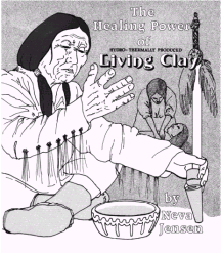 “The American Indians are dear to my heart. It is in the spirit of their
traditions that I wish to unfold the story of clay. Without this
dedication to the Indian tradition, the story would lack an essential
and deeply human dimension. As a young woman I struggled with serious
health problems. One day an aging Indian brought me some bags of
clay to take with herbs for the relief of pain, and to restore normal
body functioning. This same man disclosed to me, over the course
of several years, the effectiveness of healing with nature’s resources.
While observing and working with other native healers, I found myself
zealous to know more and more of these healing traditions. While
I was privy to the sacred ceremonies of these American natives,
a desire awoke within me to share this reverently held body of knowledge
with humanity. May you taste deeply of the wonder and reverence
for the miracle of life that the story of Living Clay represents.
“The American Indians are dear to my heart. It is in the spirit of their
traditions that I wish to unfold the story of clay. Without this
dedication to the Indian tradition, the story would lack an essential
and deeply human dimension. As a young woman I struggled with serious
health problems. One day an aging Indian brought me some bags of
clay to take with herbs for the relief of pain, and to restore normal
body functioning. This same man disclosed to me, over the course
of several years, the effectiveness of healing with nature’s resources.
While observing and working with other native healers, I found myself
zealous to know more and more of these healing traditions. While
I was privy to the sacred ceremonies of these American natives,
a desire awoke within me to share this reverently held body of knowledge
with humanity. May you taste deeply of the wonder and reverence
for the miracle of life that the story of Living Clay represents.
The value of specific clays for health care is just being recognized
by medicine today, although native cultures have sought and used
these clays since antiquity . . . Young Native American Indian women
placed small pieces of clay in their infant's mouths to pacify them
while molding pottery. Native tradition taught them which clays
were edible, while science utilizes modern techniques to distinguish
clay mineral types from the common grain of clay.
Dietary studies of descendants of the Incas of long ago reveal
clay eating as a common practice. When their ancestral mountain
empire was ravaged, the last of the Inca’s rulers escaped deep into
the Andean mountains. They took with them supplies of clay, which
were valued even above the treasures of the empire. They were transported
by human carriers to the secret city.
As the explorers came to the New World, they observed the American
Indian using various clays. Some of these uses were: the face mask
of a proud warrior, the painted body of a ceremonial dancer; [and]
a cool clay pack on a exhausted messenger.
Clays most valued by the wise Indian healers were sought where
hydrothermal activity was evident. These edible clays were highly
treasured, and to secure a supply, the natives often traveled long
distances. The use of clay was introduced to the pioneers through
the skills of the native Indian women, who on occasion were taken
as wives by the white men. However, the gathering of the clay had
traditionally been done by the men of the tribe, thus substitutions
began to occur in the white villages. Slowly the effectiveness of
this healing art was lost... "
Related: Buruli Ulcer (flesh eating disease) and the application of clay

Animals: Wild, Domesticated Carnivores, Herbivores Use Healing Clay
 Animals, domestic and wild alike, instinctively drawn to clay deposits have been observed
licking the clay as part of their everyday diet, and rolling in it to obtain relief from injuries.
Animals, domestic and wild alike, instinctively drawn to clay deposits have been observed
licking the clay as part of their everyday diet, and rolling in it to obtain relief from injuries.
Animals are instinctively selective about the types of minerals
they will ingest, shunning sedimentary minerals in favor of mineral
deposits formed by igneous hydrothermal activity. Extensive studies
with cattle, horses, pigs, fish, chickens and other animals have
shown that the volume of food intake is less when mineral supplements
are added to the their diet. Additional benefits are noted as well,
for example, increases in butter fat and milk output are documented
from dairy cows. These improvements have been found in all studies
using a specific type of calcium montmorillonite.
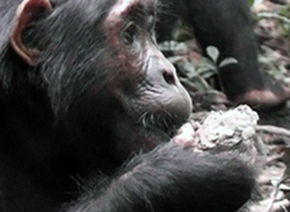 Why would animals want to eat dirt or clay? Many animals eat clay,
which is not only an effective way of binding and excreting various
toxins but, by lining the gut, it can treat gastrointestinal problems.
Native people often mix clay with tannin-rich foods such as acorns
before cooking them (tannins are bitter chemicals produced by plants
as a defense but they are also active against bacteria and fungi).
Why would animals want to eat dirt or clay? Many animals eat clay,
which is not only an effective way of binding and excreting various
toxins but, by lining the gut, it can treat gastrointestinal problems.
Native people often mix clay with tannin-rich foods such as acorns
before cooking them (tannins are bitter chemicals produced by plants
as a defense but they are also active against bacteria and fungi).
A type of clay regularly mined by mountain gorillas in Rwanda
is very similar to the kaolin sold in chemists for relief of upset
stomachs. Another good source of clay are termite mounds, and chimpanzees
are often seen breaking off chunks of soil from them. In one close
study of five chimps seen eating termite soil, all were found to
be suffering from gastrointestinal problems.
Most animals are plagued by small biting insects such as fleas,
lice, mites, ticks and various parasites which can drain blood and inhibit
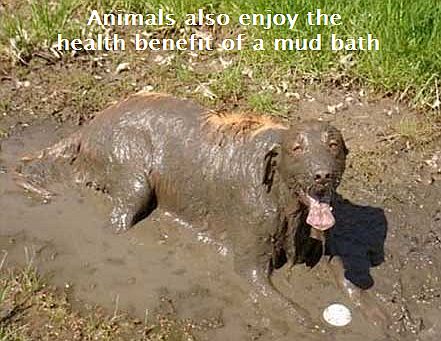 growth, so they have developed a variety of ways to deal
with them. Monkeys, apart from constant grooming, also rub themselves
with soothing plants and even insects. Capuchins in Costa Rica,
for instance, use the Piper plant, from the chilli family, which
contains compounds that deaden pain and kill off insects. Catnip
probably does something similar for cats.
growth, so they have developed a variety of ways to deal
with them. Monkeys, apart from constant grooming, also rub themselves
with soothing plants and even insects. Capuchins in Costa Rica,
for instance, use the Piper plant, from the chilli family, which
contains compounds that deaden pain and kill off insects. Catnip
probably does something similar for cats.
Benefits of calcium montmorillonite clay minerals have been documented
in research conducted by many scientists and leading universities.
Dr. B.H. Ershoff, from the University of Southern California School
of Medicine, conducted research for NASA which demonstrated the
growth promoting properties of calcium montmorillonite minerals
in cattle.
I mixed a couple of teaspoons of clay into my dog's
food and within days his stools were firm again. I continue to mix clay into his food everyday to provide him with important nutrients. Shirley
Dr. Quisenberry, from Texas AM, researched the beneficial
effects of calcium montmorillonite clays when fed to many farm animals
including horses, pigs, chickens, etc. Neva Jensen, a nationally
known nutrition expert, wrote a book on  red desert calcium montmorillonite
clay called "The Healing Power of Living Clay," explaining how the
nutrients in certain clays are assimilated in our bodies. The US
Department of Fish and Wildlife conducted similar studies on trout
fish on the Snake River in Hagerman, Idaho revealing the same health
promoting effects. All of these studies were specific to the Terramin Clay.
red desert calcium montmorillonite
clay called "The Healing Power of Living Clay," explaining how the
nutrients in certain clays are assimilated in our bodies. The US
Department of Fish and Wildlife conducted similar studies on trout
fish on the Snake River in Hagerman, Idaho revealing the same health
promoting effects. All of these studies were specific to the Terramin Clay.
Many species of mammals, birds, reptiles, and even insects, in all parts
of the world, eat dirt. Known as geophagy (earth-eating) this habit
has long been assumed to be an attempt to rectify mineral deficiencies
in their diet. However new evidence suggests that this cannot always
be the case. It has become apparent that the clay content
is often the most important ingredient of selected soils. Clay is
an effective binding agent as its chemical structure allows other
chemicals to bond with it and so lose their reactivity. Clay is
therefore an effective deactivator of toxins from diet or pathogens.
Clay is the primary ingredient of kaolin and kaopectate that we
use when suffering from gastrointestinal malaise.
- Biologists in Canada and Alaska have seen brown bears lick
clay from banks alongside footpaths. At the same time, their
scats are full of clay.
- In Venezuela free-ranging cattle dig and lick at clay subsoils.
In Africa, the African buffalo licks clay from any newly exposed
subsoil.
- Chimpanzees, giraffes, and rhinoceroses eat regular mouthfuls
of clay-rich termite mound soil and gorillas mine clay-rich
volcanic rock from under the exposed roots of ancient trees.
- Rats eat soil when sick - so reliably that geophagy is used
as an indicator of gastrointestinal malaise in rats."
Also See: Animals Eating Clay as Medicine

Adsorbing and Absorbing Toxins
The ideal clay is one that will adsorb and
absorb the poisons, as well as enhance or expand on whatever
nutrients have been taken. For instance, if the herbs ginseng and
garlic have been taken, or the antioxidant pycnogenol, one should
benefit from greater assimilation because of the clay's action as
an intestinal cleanser and gastrointestinal regulator. As the body
cleans house, it is in a better position to more efficiently assimilate
the much-needed nutrients.
Unfortunately, many people take a handful of supplements but
never reap the desired effects because of a malfunctioning colon.
Whereas a healthy person will digest most of whatever food substance
he or she puts into the body, someone whose colon function is deficient
may digest very little. Although new health programs may be introduced,
sometimes the person is still feeling run-down, cranky, and sick.
Clay can be an important part of one's health program because it
assists colon function. Then, whatever supplements are taken in
addition to the clay will be better used by the body because the
body will have the means to do so.
Mineral Deficiency and Supplementation
Clay provides an impressive assortment of minerals, including
calcium, iron, magnesium, potassium, manganese, and silica as well
as trace elements - those appearing in very tiny amounts. Without
the basic minerals, life cannot exist; without the trace minerals,
major deficiencies will develop. The lack of either will make it
impossible for the body to maintain good health.
Most people don't realize the importance of minerals and underestimate
their legitimacy and use. This is too bad, because the body cannot
manufacture its own minerals. Instead, they must be supplied by
outside sources. Our need for minerals is as important as our need
for air or water.
"The body can tolerate a deficiency of vitamins for a longer
period of time than it can a deficiency of minerals. A slight change
in the blood concentration of important minerals may rapidly endanger
life," says F. P. Anita, M.D., in his book Clinical Dietetics and
Nutrition (1989). Furthermore, mineral deficiencies can exacerbate
symptoms caused by vitamin deficiency.
In most clays, the mineral exists in natural proportion to one
another. This encourages their absorption by the intestinal tract.
Accordingly, clay has been used by many tribes and cultures in the
treatment of anemia and other mineral deficiencies
Minerals are present in living tissue and are essential to all
chemical reactions in the body. However, the body cannot manufacture
its own minerals, and they must therefore be supplied by an outside
source. Without minerals, the body will easily succumb to disease.
What Do Minerals Do?
Minerals perform a number of important functions.
- Supply major elements and trace elements that may be lacking in the diet.
- Act as catalysts, thus playing a major role in metabolism and cell building.
- Regulate the permeability of cell membranes.
- Maintain water balance and osmotic pressure between the inside and outside environment.
- Influence the contractibility of muscles.
- Regulate the response of nerves to stimuli.
Why are minerals so important to the chemical reactions in the human
body? The cell is like an electrical battery with positive and negative
charges. When the energy of the battery begins to weaken, the cell
becomes sick and weak. However, if the dying cell is charged by
an electrical current, it will become living once again. Minerals
themselves hold positive and electrical charges. The exchange of
these charges accounts for its action. Scientists are not sure exactly
how this works or to what degree it does. Yet, when the cell is
given the essential minerals it needs to live, it can regenerate
and "nurse" itself back to health.
Clay works best when taken over a long period of time. That's
because its actions are subtle. Like a snowball rolling down the
hill, it starts off small and slow. As it continues to roll, it
soon picks up momentum and goes faster. Clay does not offer instant
cures for all ailments, but history shows it can encourage the body
to put up a better fight when taken over a long period of time.
When clay is taken for indefinite periods of time, it has no
addictive qualities. This is a big concern for many who begin eating
the clay. The effects can be so positive that it scares them into
thinking they might need it forever. However, one can quit eating
clay at any time. There are no withdrawal symptoms, and you will
never need to enter a withdrawal program.
Many people ask if clay is something they have to take for the
rest of their life. The answer to the question, of course, is they
don't have to; there is no risk in discontinuing its use. But, why
not take something that is good and will help clean out your body?
Especially in today's highly polluted world, the liver and kidneys
are so overworked they never have a chance to rest. Taking a spoonful
of earth minerals every day helps them to work better and keeps
the mind and body functioning in tip-top condition. To remain healthy,
eat clay for a long time.

Calcium Montmorillonite Clay
Both human and animal ingestion of calcium montmorillonite minerals
have been an accepted practice throughout the world for many years.
Calcium montmorillonite mineral deposits have been used by Native
American healers for centuries as an internal and external healing
agent. The Native Americans would use mineral rich clay on open
wounds and for stomach or intestinal distress. The key to these
healing benefits is the natural form in which these minerals are
found.
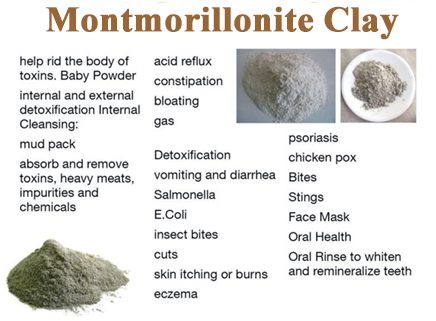 Montmorillonite belongs to the smectite group of clays. There
are two types of montmorillonite, sodium and calcium. Sodium montmorillonite
is commonly known as bentonite; the name is derived from the location
of the first commercial deposit mined at Fort Benton, Wyoming USA.
Montmorillonite belongs to the smectite group of clays. There
are two types of montmorillonite, sodium and calcium. Sodium montmorillonite
is commonly known as bentonite; the name is derived from the location
of the first commercial deposit mined at Fort Benton, Wyoming USA.
Bentonite principally consists of sodium montmorillonite in combination
with 10 to 20% of various mineral impurities such as feldspars,
calcite, silica, gypsum, etc. Sodium montmorillonite clays are the
industrial clays used in things like: plaster, oil well drilling
mud, cat litter, matches, cement tiles, lubricating grease, paints,
copy paper, dynamite, shoe polish, concrete, cleaning agents, wall
boards, crayons, and bleaching agents to mention a few.
Calcium montmorillonite, the second type of montmorillonite,
is also known as "living clay" for it principally consists of minerals
that enhance the production of enzymes in all living organisms.
California Earth Minerals calcium montmorillonite is the preferred choice to use
for soil, plants, animals and humans, especially when ingested,
hence "edible clays. " Benefits of calcium montmorillonite minerals
have been documented in research conducted by many scientists and
leading universities.
Dr. B.H. Ershoff, from the University of Southern
California School of Medicine, conducted research for NASA which
demonstrated the growth promoting properties of calcium montmorillonite
minerals in cattle. Dr. Quisenberry, from Texas A/M, researched
the beneficial effects of calcium montmorillonite clays when fed
to many farm animals including horses, pigs, chickens, etc. Neva
Jensen, a nationally known nutrition expert, wrote a book on red
desert calcium montmorillonite clay called "The Healing Power of
Living Clay," explaining how the nutrients in certain clays are
assimilated in our bodies. The US Department of Fish and Wildlife
conducted similar studies on trout fish on the Snake River in Hagerman,
Idaho revealing the same health promoting effects. All of these
studies were specific to calcium montmorillonite clay found in southern California.
The benefits of calcium montmorillonite clay are due to the mineral content
or trace elements which are vital to the cellular functions of all
forms of living creatures. Perfect health can only be obtained by
a diet which supplies a proper balance of essential nutrients. Trace
mineral elements are necessary for vitamins and enzymes to function.
Without enzymes the body can not activate certain chemical processes
like digestion or the synthesis of proteins within cells. For example:
- A trace of Copper is needed for the synthesis of hemoglobin.
- A trace of Cobalt is needed to make vitamin B 12.
- A trace of Zinc is needed by the pancreas to manufacture insulin.
However, modern agricultural practices jeopardize our health. Our
farming techniques use the soil over and over for high yield mass
production, depleting the soil and the crops of vital essential
elements. As soil health declines, crop health falters and farmers
become increasingly reliant upon synthetic petroleum-based fertilizers
to artificially replenish the soil with nitrogen, phosphorous, and
potassium (NPK); only three essential elements.
The trade off for
adding synthetic enhancers is that the living soil remains deprived
of naturally occurring bacteria that produce nitrogen, thus the
soil is dying and crops actually become dependent on artificial
fertilizer to sustain life. Aquifers are now contaminated with nitrates
that were leached from farmlands. The combination of leaching from
rain and irrigation, overuse of the land, and chemical fertilizers
deteriorates the level of nutrients in our soil. As a result, most
of the food grown is deficient in trace mineral elements. The few
trace mineral elements that remain are removed during processing,
e.g., the milling of wheat.
These same crops are used in turn to feed the animals we use
for food. Mass production rids these animals of their natural grazing
habits, so animal feeds are needed to supplement or replace their
natural food sources. The plant life used to create animal feed
is deficient of naturally occurring trace elements, therefore, the
animals are robbed of these life giving nutrients.
Studies have shown that there is a relationship between human
malnutrition and the depletion of trace elements in soil. According
to the USDA, we would have to eat 75 bowls spinach in order to get
the same amount of iron as one bowl eaten in 1948. As a result,
malnutrition exists in 57% of US citizens over the age of 65! To
slow (and eventually reverse) this malnutrition trend, we need to
look more closely at nature and learn a more complete picture of
health.
Quality Calcium Montmorillonite clay from the Hebbard mine clay
Mineral deposits formed by igneous activity in bubbling mud pots
have a calcium magnesium complex which can be activated by a +1
or -1 of a hydrogen or oxygen ion. Minerals are found throughout
North America, however, the Hebbard mine clay deposit is found in a region where
the rainfall is minimal, moisture is non-existent, and temperature
consistently high. This combination of arid conditions keeps the
ion in an 'open ion state' that is more usable. Deposits which are
found in Northern areas where there is rain, snowfall and leaching
are not as likely to be found in an 'open ion state', thereby being
of lower quality and grade. The negative ion charge is best used
by the body for detoxification purposes. All toxins are positively
charged. In nature, opposites attract. Thus, the negative ions attract
the toxin's positive ions, facilitating the movement of toxins through
the kidneys or lymphatic system to a site of normal excretion of
the toxins.
IonMin Clay can help to improve our health; from replenishing
our soil with vital essential elements, to improving the vitality
of our plant and animal foods, and by removing toxins from our bodies.
Native Americans knew this. Animals instinctively know this. Scientific,
medical, and agricultural research has proven this. Use life promoting Clay.
Calcium montmorillonite clays and animals
Dr. Quisenberry, from Texas A M, researched the beneficial effects
of calcium montmorillonite clays when fed to many farm animals including
horses, pigs, chickens, etc. Neva Jensen, a nationally known nutrition
expert, wrote a book on IonMin Clay called "The Healing Power
of Living Clay," explaining how the nutrients in certain clays are
assimilated in our bodies. The US Department of Fish and Wildlife
conducted similar studies on trout fish on the Snake River in Hagerman,
Idaho revealing the same health promoting effects. All of these
studies were specific to IonMin Clay.

The Energy Exchange of Living Clay
By going back to our base physical components, it can be safely
said that the physical body is built from multitudes of particles
held together by electrical bonds. Electrical forces are what hold
atoms and molecules together. Chemical bonds and reactions depend
on these electrical forces. Therefore, all chemical reactions are,
in essence, reorganizations of electrical forces, which continue
to be vital at body levels, i.e., tissues and organs. When this
is all taken into account, a living organism is shown to be an extremely
intricate electrical system (Gibson and Gibson 1987).
During illness, the vital force is weak and incapable of supporting
the body and its functions. In health, however, the opposite occurs:
the force is strong and is able to counteract sickness and decay.
What keeps the immune system running is the energy that feeds it,
the substance of life. The body will not run well, or will at least
run with all sorts of mechanical problems, when there is no energy
to support it.
Therefore, in order to create health, the body must be stimulated
and re-stimulated by another working energy, like clay.
The best-known characteristic of clay is that it "acts as needed".
Clay is said to propel the immune system to find a new healthy balance.
Reactions are not forced, but rather triggered into effect as they
are needed. To put it into other words, clay simply strengthens
the body to a point of higher resistance. In this way, the body's
natural immune system has an improved chance of restoring and maintaining health.
Related: Clay - Adsorption versus Absorption
Note from Shirley:
 I use
Terramin clay in my drinking water everyday and also
add it to my dog's food and drinking water. I sprinkle one or two
tablespoons of red desert calcium montmorillonite clay into a quart
of water . (I use ion-microwater (alkaline, live water). Unlike the pascalite
or bentonite clay, Terramin
clay is not gritty and is pretty tasteless. Clay has done wonders for my health.
I use
Terramin clay in my drinking water everyday and also
add it to my dog's food and drinking water. I sprinkle one or two
tablespoons of red desert calcium montmorillonite clay into a quart
of water . (I use ion-microwater (alkaline, live water). Unlike the pascalite
or bentonite clay, Terramin
clay is not gritty and is pretty tasteless. Clay has done wonders for my health.
I also add clay to my bath water and use
Terrabathe Soaking Clay and use about 3 to 5 cups in my bath
water. To avoid creating clumps, I sprinkle clay over the hot water
and let it stand without stirring. Within 5 minutes or so, the clay
will have dissolved into the water and sank at the bottom. Stirring
clay in water before it has a chance to dissolves on its own will
inevitably create clumps which will be difficult to dissolve.

Internal/External Uses
For healing and therapeutic purposes, clay may be used externally
and orally. Eating clay by dissolving it in water can be a wonder
working cure. (However, not all clays are safe to eat. For details,
see Eeny, Meeny, Miny—Montmorillonite). Applied in poultices and
compresses, clay provides numerous benefits. It can heal sores and
ulcers and aid in the rebuilding of healthy tissues and cells, and
even of fractured bones and vertebrae.
Clay (together with lemon) acts on capillaries, liberating them,
dissolving crystals and “flakes. Its natural tendency is to absorb
toxins. For example, it is useful in neutralizing intoxication
caused by poisonous mushrooms and chemical acids.
Taken orally, clay initiates a many-pronged effect. In cases
of organic disorders, its intense activity eliminates and destroys
unhealthy cells and activates the rebuilding of healthy ones. Besides
the colloidal properties of clay, it acts as a cleansing agent eliminating
all noxious substances. The same sedating, relaxing, absorbing and
healing action is seen in treatment of the inflammation of the intestines
as well as amoebic and other types of dysentery.
All this is the ‘direct action,’ or the immediate action of clay
on the digestive channel. But clay activity goes much further: clay
not only cures minor problems, such as diarrhea and constipation
through local application; it acts on all the organs—on the whole
organism. Everything unhealthy, that emits negative radiations is
irresistibly attracted to clay and becomes subject to immediate
elimination.
For true healing to occur in a malfunctioning (or partially-functioning)
organ, a remedy must do more than supply a lacking substance. Clay
goes the extra mile by stimulating the deficient organ, thereby
restoring the failing organ back to health.
Alchemy of Elements
Clay is an effective agent for an extensive list of ailments—too
many to elucidate upon in the scope of this project. For this reason,
please follow our “quick reference list and links to further reading
on any specific topic. Moreover, an analysis of its composition
is not sufficient to explain the miraculous results it produces.
Wherever there is a deficiency, clay seems to supply the needed
substance, regardless of whether or not the clay itself is rich
in that substance. Clay does more than restore a particular substance
lacking in the body. Where synthetic substances (i.e., medications)
may act this way, clay does more than just remedy a particular deficiency.
One of clay’s peculiarities is based on its physical-chemical
domination. From a thermo-dynamic point of view, we must admit that
clay cannot be the sole source of energy of the phenomena it produces.
Clay is effective through a dynamic presence far more significant
than a mere consideration of the substances it contains. It’s the
alchemy of elements that enables it to act as a catalyst, rather
than an agent in itself. This is because clay is a living substance.
Clay is “alive.
Awaken Your Extraordinary Energy Resources
Clay receives vital energies from sun, air, and waters, making
it a powerful agent of stimulation, transformation and transmission
of energy. As every filing from a magnet maintains its properties,
every parcel of clay retains a considerable amount of energy of
our planet’s large and powerful magnetic entity. This radioactive
action (def.: emission and propagation and emission of energy in
the form of rays or waves) transmits extraordinary strength to an
organism and helps rebuild vital potential by liberating its latent
energy. We all possess extraordinary energy resources that normally
remain dormant. Clay awakens them!
It would be presumptuous to attempt a precise and concrete explanation
of the basic action of clay. Among the properties to which we can
attribute its effect is radioactivity. Clay is radioactive to a
degree (as is everything), but this radioactivity is generally imperceptible
to the testing apparatus at present used in laboratories. Some mud's
are an exception.
Radio-esthetically, the matter has been extensively discussed.
Scientists differ widely as to the significance of this radioactivity
in clay. The different compositions of clays further complicate
this phenomenon.
It seems that clay has, among other properties, that of either
stimulating a deficiency or absorbing an excess in the radioactivity
of the body on which it is applied. On an organism that has suffered
and still retains the radiations of radium (or any other intensive
radioactive source), the radioactivity is first enhanced and then
absorbed. Clay could, in this way, ensure the protection of organisms
over-exposed to atomic radiations. This radioactive effect has been
researched: today, when everyone is forcibly submitted to many artificially
provoked radioactive aggressions, such as dust in the atmosphere
from bomb testing, everything increasing this danger should be avoided.
Experiments made with the Geiger encounter have demonstrated that
dry clay absorbs a very important part of this surrounding radioactivity.
Clay minerals are found in various proportions to produce the
great diversity of clays in nature. The mixture of elements accounts
for the various colors of the clays created by the predominant mineral
contained in it.
Clay is a plentiful material: any soil sample may contain a few
clay particles. Clay’s mineral properties establish the size of
the clay particle. Clay minerals are silicate crystals that are
so fine-grained they’re really micro crystals, meaning that they’re
easily absorbed by the human body.
In general, clays contain about fifteen minerals, and many more
trace minerals. In the basic fifteen minerals, a typical element
such as magnesium may be the dominant component. It can be replaced
by aluminum or possibly iron, or any single mineral substance since
it becomes an active or “rotating ion, which creates an energy field
around it. This occurs as the molecules of a single mineral break
into its simpler constituents, or as two interacting minerals exchange
a portion of their constituents.
Any of the basic groups may be replaced by another substance
until the mineral structure is essentially balanced electrically.
The extent to which the clay mineral ions become active determines
the clay’s classification as “living clay. This may be accomplished
by the addition of a molecule of water if the clay mineral has been
created in such a way as to contain a charge. Living clays have
not been chemically treated in any way.
Eeny, Meeny, Miny—Montmorillonite
To reap the all of clay’s wonder-working benefits, take clay
that meets the stringent U.S. federal purity standards for microbial
limits, absence of pathogens, absence of adulteration, and product
consistency. Most clay sold in health food stores (in a dietary
supplement section) should be safe for consumption, but always ask
a customer service representative if you’re not certain. Both Montmorillonite
and Bentonite clays belong to the Smectite family,
which is characterized by its expandable properties; however, Montmorillonite
is purer, more complex clay with greater exchange capacities. Its
ability to adsorb and absorb toxins makes it the most preferred
species of edible clay.
The Healing Power of Hydro-Thermally Produced Living Clay
Dextreit, Raymond; “Our Earth, Our Cure; © 1974 by swan House Publishing
Co.; ISBN 0-013010-07-3
[i] Merriam Webster’s Collegiate Dictionary, Tenth Edition; Copyright
©1994 by Merriam-Webster Inc.
[ii] Ibid
iii Knishinsky, Ran; “The Clay Cure, ‘Natural Healing from the Earth; p. 15.

Uses of Clay Today
No material extracted from the earth is put to a wider variety
of uses than clay, and no material except flint has been used longer.
Clays differ widely in their effectiveness. The red montmorillonite
clay of the smectite group remains an effective favorite for human
use, because it has been hydro-thermally altered and seasoned in
the arid desert.
Using clay for healing is a profound experience. Applying cooled
or warmed clay locally on external body tissue has a cleansing,
and healing effect. Inflammation and pain soon diminish with clay
applications. Toxicity is never evident when using the living clay
either internally or externally. The internal use of clay for ulcerated
or irritated conditions of the stomach, bowels, colon or bladder
can give noticeable relief. Over-acidity in the tissue of these
organs can be corrected with the use of clay.
Diets generally are lacking essential trace minerals and micronutrients.
When living clay is used with foods and exposed to gastric juices,
the nutritional benefits of the clay’s trace minerals are accentuated.
Living clays have an abundance of negatively charged ions. As a
molecular constituent carries an electrical charge, it creates movement
and interchange of positively charged ions. This phenomena is essential
to all metabolic processes in the human body.
Applications (according to research and the manufacturer's instructions)
- Brush Teeth: Astringent to gums, removes tartar, controls bleeding gums, pyorrhea.
- Facial Pack: Moisten clay to a smooth paste (using approximately 50% water)
and spread evenly over entire face; let dry twenty
minutes, then remove with warm water. Follow with moisture cream.
- Acne, Pimples: Use facial pack daily; take 1 tsp. powdered clay or eight
tablets internally each day.
- Skin Condition: Make paste with water and cover affected area. Excellent
for warts, athletes foot, yeast fungus, jock
itch, ringworm, sunburns, scalp, pimples, cuts, staph around fingernails,
boils, poison ivy, cold sores, canker sores, and shingles.
- Internal Uses: Colitis, diarrhea, hemorrhoids, stomach ulcers, or any
abnormal condition of the alimentary canal responds well
to the use of clay internally.
- Surgery: The use of clay internally before and after surgery gives remarkable benefits.
- Allergy: It has been observed some food allergies were benefited by clay.
Experiment by using the clay with the known food allergen.
Then eat the food allergen, omitting the clay, and observe the response.

Calcium Montmorillonite TerraPond and Koi Fish
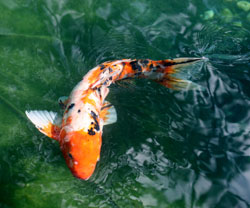 TerraPond is an all-natural product that is recognized by most Koi breeders
as the foremost product to introduce minerals and nutrients to your
precious Koi. This introduction can be done through your pond water
as the Koi will absorb the minerals and nutrients through their
skin ( TerraPond dissolves to micro fine size particles), through
their gills, as well as ingesting directly by eating the TerraPond.
This results in your fish achieving their true potential. Additionally,
TerraPond performs wonders by purifying, clarifying and treating
your water.
TerraPond is an all-natural product that is recognized by most Koi breeders
as the foremost product to introduce minerals and nutrients to your
precious Koi. This introduction can be done through your pond water
as the Koi will absorb the minerals and nutrients through their
skin ( TerraPond dissolves to micro fine size particles), through
their gills, as well as ingesting directly by eating the TerraPond.
This results in your fish achieving their true potential. Additionally,
TerraPond performs wonders by purifying, clarifying and treating
your water.
TerraPond is the purest form of Calcium Montmorillonite clay in
the world. It is mined from a unique deposit in the United States.
This rare deposit was formed millions of years ago when the Colorado
River carried these minerals from the Rocky Mountains to the present
day site of California Earth Minerals mining operations.
TerraPond improves your Koi's immune system through nutrition
and detoxification. It helps by eliminating waste products, bacteria
and decomposed organic matter in the water. When these particulates
are absorbed and safely removed, it results in healthy fish and
clear pond water.
TerraPond is also a powerful and effective treatment for water
gardens, golf course waterways, lakes and ponds where clarity and
purity is an important environmental concern. It offsets the effects
of Chlorine chemical fertilizers, pesticides, herbicides, fungicides,
heavy metals and toxic substances potentially harmful to local water
supplies.
TerraPond -- in both powdered and premium hand selected rock
forms -- works its wonders through a natural magnetic process. All
toxins and decomposed organic materials in nature are positively
charged. The magnetic attraction immediately begins when negatively
charged TerraPond is introduced into your pond water and begins
the micro-encapsulation process. This electrical ion exchange process
is also referred to as "flocculation."
As a result, the electrically bonded particles are larger in
size and weight. In Koi ponds, this increased mass then becomes
filterable in most bio filter systems. In natural ponds (non-filtered)
or larger lake environments (where the recommended application of
TerraPond is in powdered form), these enlarged and heavier particles
sink to the pond floor and safely decompose. This process is very
similar to leaves dropping in the forest and decomposing/composting
over time.
According
to Japanese Koi breeders, natural clay-lined ponds provide the very
best Koi environment. Clay provides better health, conformation,
vitality, coloration, stronger immune systems, improved digestion
and longer life. As a Koi hobbyist, when your clay choice is TerraPond,
your fish will enjoy the very best environment you can provide.
When TerraPond, in its natural rock form is first introduced
into your Koi pond, you can look forward to some interesting and
enjoyable results. When the rock enters the water, it begins to
bubble and slowly "melt." Some clouding then occurs. The clouding
and bubbles will provoke your fishes' interest and curiosity.
The boldest fish may approach the rock and begin to swim through
the cloud. It may also nibble at the rock as it melts. Your fish
are ingesting nutrients through this activity. Little by little,
other fish will want to join in on this new game.
Once the fish have had this experience, they learn to look forward
to a TerraPond rock treat. Very much like a pet treat, Koi seem
to enjoy the experience of playing and nibbling at the substance.
As a result of this Koi play activity, your fish will receive the
highest form of nutrients through direct ingestion.
TerraPond is an edible, organic clay compound that when eaten,
delivers nutrients and trace elements that benefit the health, vitality,
longevity and appearance of your fish. It is a rare and pure form
of Calcium Montmorillonite (Bentonite). TerraPond was formed millions
of years ago, when glacial melt carved through today's Rocky Mountains
in the western U.S. Favorable properties, brought boiling water
to the surface of the earth creating extensive pools of bubbling
mud. These bubbling pools churn the calcium montmorillonite adding
beneficial natural minerals.